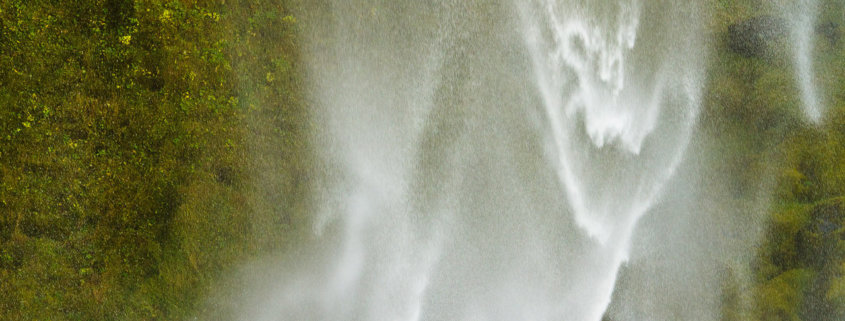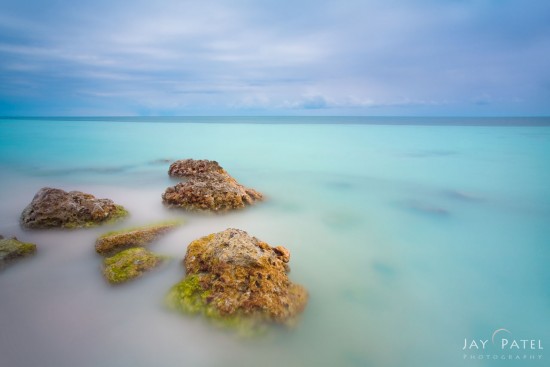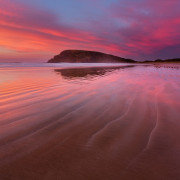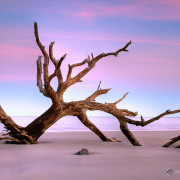Top 3 Ideas to Simplify Your Nature Photography Composition
Do your nature photos feel cluttered or overwhelming? You’re not alone. Simplifying a nature photography composition can be challenging because there is no single cookie cutter approach to follow. Every situation is different from the last. However, with a clear understanding of composition techniques and a bit of practice, you can create stunning, impactful photos.
What Is a Simple Photo?
Before we can discuss how to simplify a photo, we need to define what is a simple photo? A simple photo is one that is visually clear and easy for our brains to process. In such images, the subject stands out distinctly from the background. Simplifying your composition enhances the visual impact by reducing distractions and directing the viewer’s attention to key elements like color, mood, and texture. By mastering simplification, you’ll create images that are not only aesthetically pleasing but also deeply engaging.
Here are some highly effective ideas that I use to simplify my nature photography compositions:
Learn to Organize Your Nature Photography Composition
Rules of photography composition often makes the aesthetics of a photo better, but they do not make the photos simpler. To simplify a nature photo, you need to understand how the human brain organizes visual information. Gestalt principles—such as proximity, similarity, and continuity—how we group similar elements, recognize patterns, and simplify complex images when we perceive objects.
By using this knowledge, we are able to simplify our nature photography composition and separate our subject from its background which makes the photo more visually appealing.
For example, by arranging elements together, you create a sense of order and harmony. A chaotic scene with no clear focal point can become visually appealing when elements are grouped and structured thoughtfully. In the Image #1 above the elements seem randomly organized with no clear point of interest. However, when the same elements are organized in Image #2, we can see a sun created by similar objects and an eagle in the center. Clearly the second image is simpler than the first which seems to be unorganized and chaotic.
Take a look at the photo above from Grand Staircase-Escalante National Monument in Utah. By placing similar objects close together, I organized all the elements into distinct groups—windows at the top, parallel lines in the middle, and a leading line at the bottom. Even though this image comprises several hundred elements, it is simple for our brains to categorize. This organization makes the complex scene easier to interpret and visually striking. Similarly, you can use concepts such as continuity, proximity, common fate, and others to group your compositional elements and create a strong visual appeal.
Use Camera Setting to Highlight Your Subject
Another straightforward way to simplify your nature photography compositions is by mastering camera settings for nature photography. Both aperture and shutter speed are excellent tools for this purpose. For instance, a wide aperture (shallow depth of field) separates your subject from its background by creating a beautiful background blur, while adjusting shutter speed can freeze or smooth motion, simplifying the overall image.
In the photo above, I aimed to remove distracting dark streaks caused by the motion of floating vegetation in the ocean. By using an 8-stop neutral density filter to reduce the light entering the lens, I achieved a 53-second shutter speed. This long exposure smoothed the water and eliminated the motion blur, creating a clean, minimalist scene.
Camera lenses also play a key role in simplifying compositions. A telephoto lens for nature photography can compress the background and eliminate distracting elements, helping you focus attention on your subject. For example, I used a focal length of 110 mm to highlight the intricate patterns in the Seljalandsfoss waterfall in Iceland, effectively drawing the viewer’s eye to the most compelling parts of the scene.
Use Local Adjustments in Photoshop and Lightroom
Post-processing is essential for creating clean and impactful nature photography compositions. One of the easiest nature photography tips for beginners is to crop out distracting elements. It’s important to remember that nature doesn’t always conform to the standard 3×2 format. When the 3×2 aspect ratio doesn’t work for your landscape photography composition, consider exploring alternative formats or creating a panoramic nature photography composition to emphasize your subject. For example, I combined four images to craft a stunning panorama of a volcanic crater in Iceland.
Using local adjustments in Adobe Photoshop and Lightroom for nature photography editing can take your post-processing to the next level. These tools allow you to enhance your nature photography compositions by emphasizing or de-emphasizing specific areas of the image. Adjustments to sharpness, tonal range, colors, contrast, textures, and even adding subtle blur can simplify complex scenes. Photoshop Layers and Masks and Lightroom filters provide precise control, helping you refine your subject’s focus and minimize distractions.
For instance, in the photo above from the Wahweap Hoodoos in Utah, I adjusted textures and clarity to reduce background contrast. This technique allowed the tall hoodoo—my subject—to stand out distinctly, transforming the composition into a visually striking and professional nature photo. These nature photography post-processing techniques are essential for creating photos that resonate with your audience and elevate your portfolio.
Combining Techniques for Maximum Impact
It is important to note that, more often than not, you will need more than one technique to simplify your nature photography composition. In a shot of the White Hoodoos, I used a telephoto lens to unify background textures, strategically hid distractions by adjusting my camera position, and later fine-tuned the image in post-processing. This allows our brains to interpret the background with similar textures as a single object. This allowed me to highlight my subject with the least amount of distractions possible.
Simplification Is a Workflow
The process of creating simple, impactful nature photos begins in the field and continues into post-production. Consider how you’ll refine the image while shooting, and plan your compositions with post-processing in mind. By mastering the principles of perception, understanding your camera settings, and honing your editing skills, you’ll consistently capture breathtaking, simplified nature photography compositions.
Simplifying your nature photography isn’t just about removing distractions—it’s about making every element in your frame purposeful. Learning to simplify a photo in nature takes effort, but with practice and patience, you’ll discover how to create visually compelling images that truly resonate with your audience.
So, head out into the wild, apply these nature photography composition tips, and let simplicity transform your photos into works of art.

















